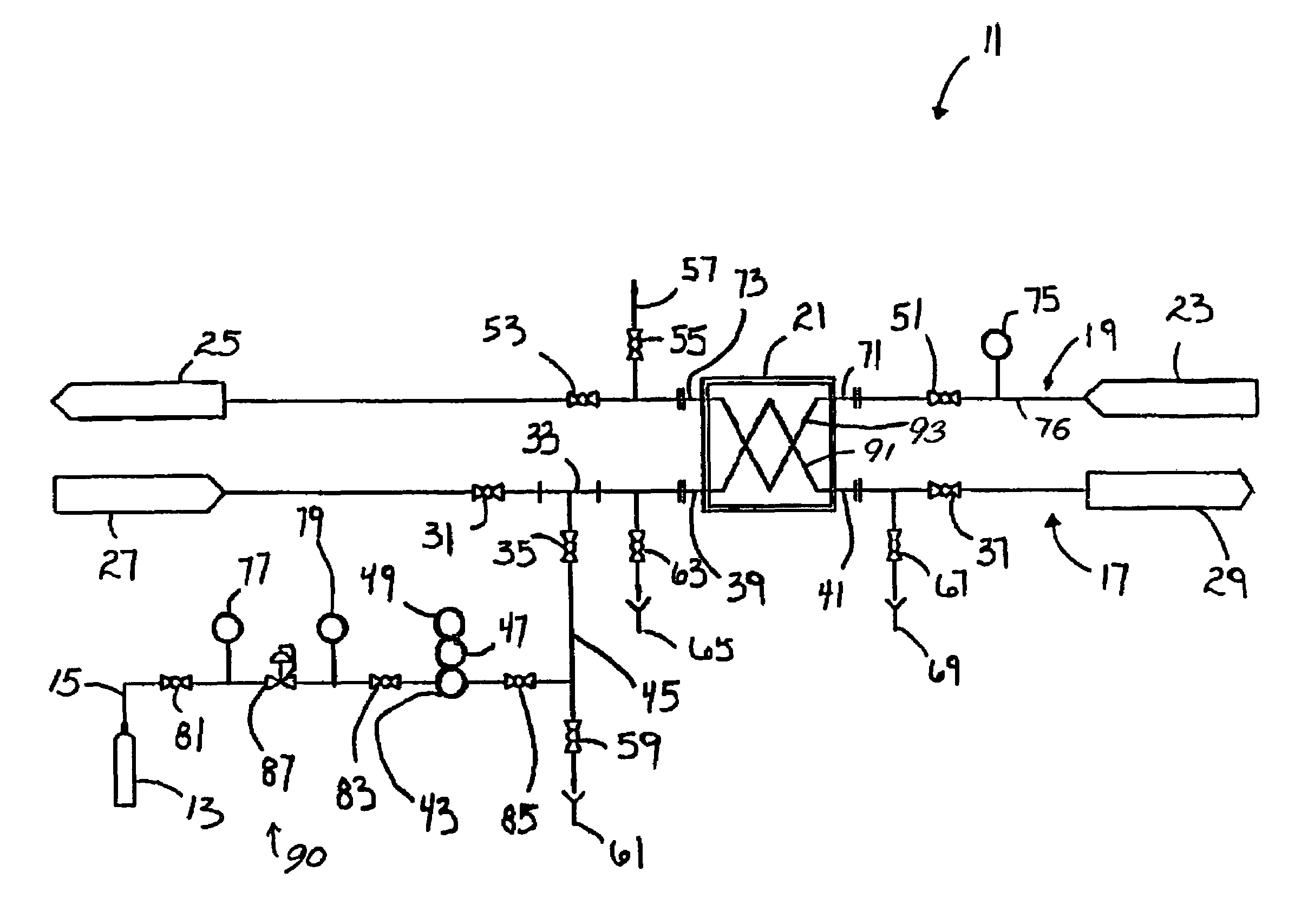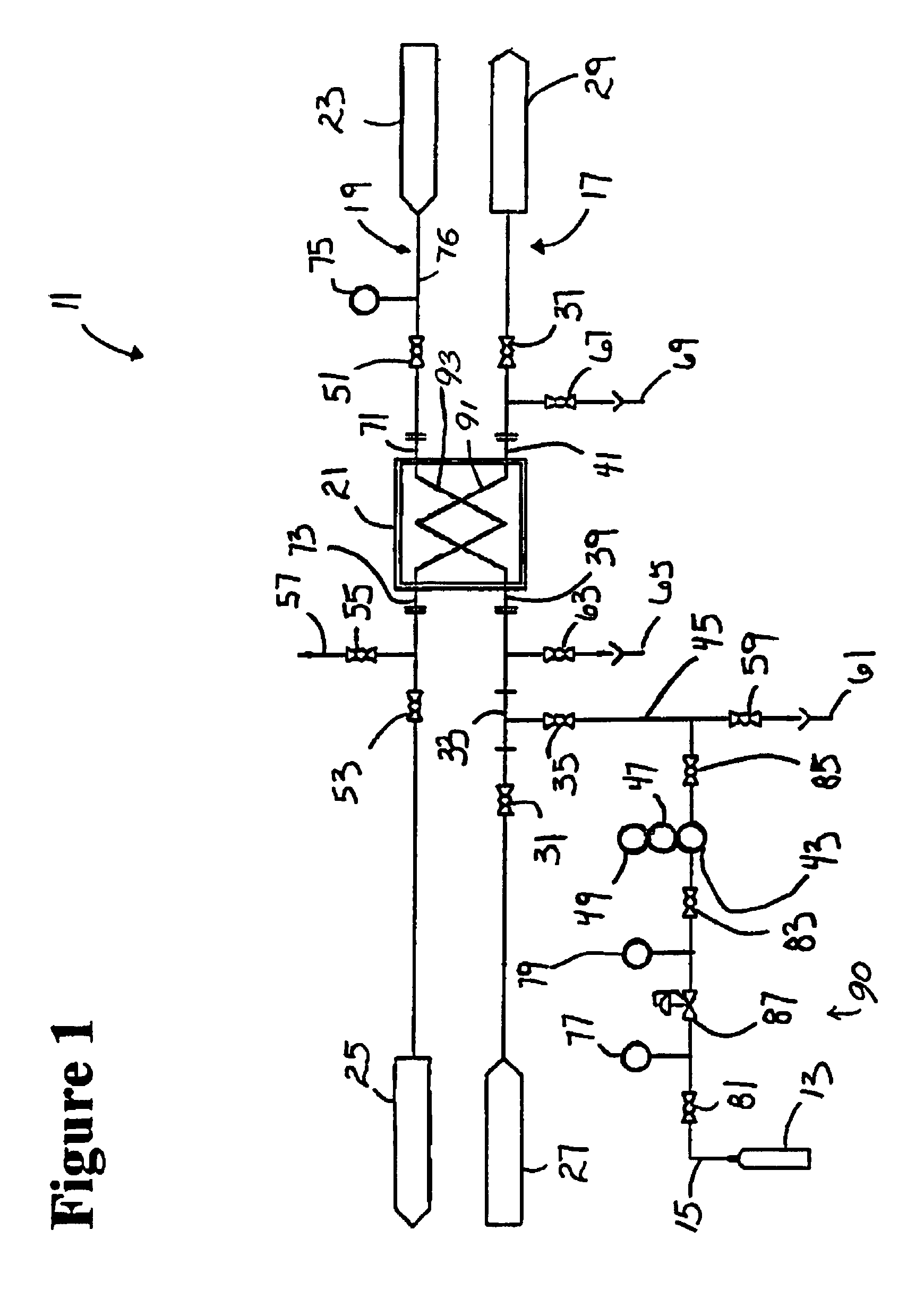Heat exchanger leak detection using mass gas flow metering
a technology of mass gas flow and heat exchanger, which is applied in the field of heat exchangers, can solve the problems of fluid transfer, undesirable and often dangerous leakage, and leakage between the product chamber and the media chamber
- Summary
- Abstract
- Description
- Claims
- Application Information
AI Technical Summary
Benefits of technology
Problems solved by technology
Method used
Image
Examples
Embodiment Construction
[0019]The present invention provides new testing procedures for leak detection in heat exchangers.
[0020]The flow rate leak test method of the present invention is not designed to completely eliminate the current practice of disassembly and removal of plates for dye checking. The present invention does, however, provide a simple test method that eliminates the need to always disassemble and dye check a heat exchanger to determine if leakage exists. The equipment needed for the flow check test method of the present invention may be made portable for testing multiple units, or installed as a fixed dedicated unit. The flow meter installation may be permanent or temporary. When used as a predictive maintenance tool, this method of testing saves a great deal of unnecessary labor. The disassembling and removing of the plate pack is only necessary if a leak is detected.
[0021]The basic system components and procedures are summarized as follows.
[0022]FIG. 1 is a schematic of the heat exchange...
PUM
 Login to View More
Login to View More Abstract
Description
Claims
Application Information
 Login to View More
Login to View More - R&D
- Intellectual Property
- Life Sciences
- Materials
- Tech Scout
- Unparalleled Data Quality
- Higher Quality Content
- 60% Fewer Hallucinations
Browse by: Latest US Patents, China's latest patents, Technical Efficacy Thesaurus, Application Domain, Technology Topic, Popular Technical Reports.
© 2025 PatSnap. All rights reserved.Legal|Privacy policy|Modern Slavery Act Transparency Statement|Sitemap|About US| Contact US: help@patsnap.com


